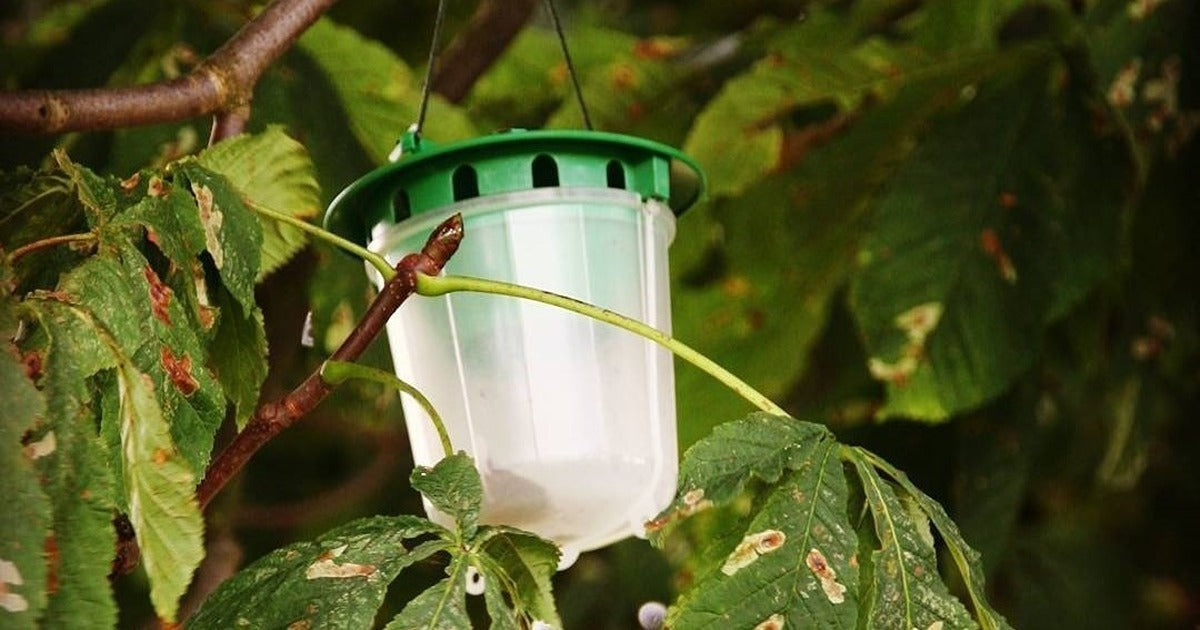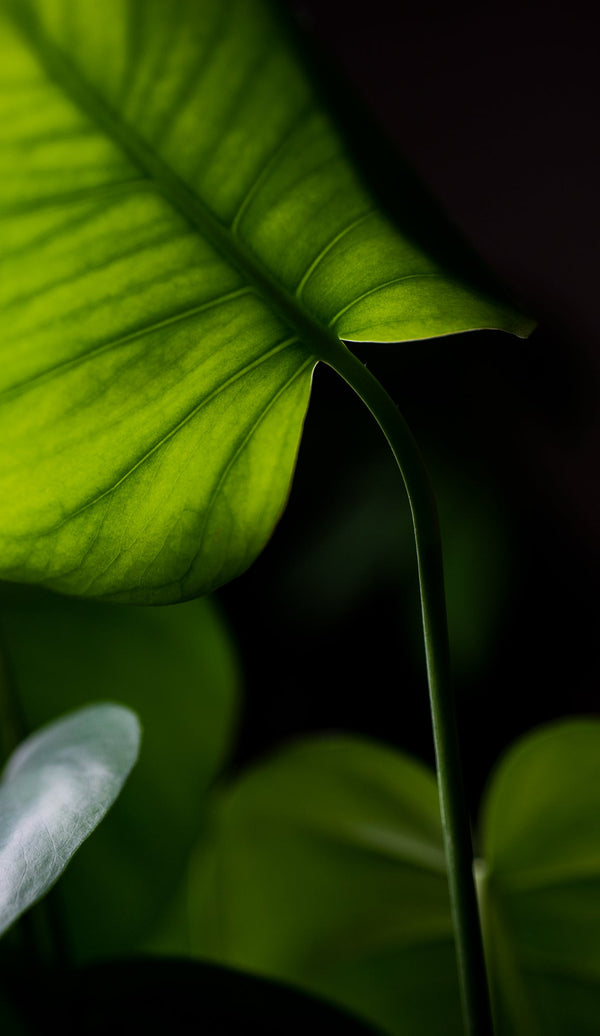
Dragonfli's Range Of Insect Traps Will Protect All Manner Of Plants From Pest Infestation
Insect traps are a very useful tool in a gardener's armoury as they provide an early indicator of pest problems that may lay ahead, and contribute greatly towards the control of such pests. Dragonfli supply a range of insect traps, from sticky traps designed for greenhouse and indoor use only, to larger pheromone traps that can be used outdoors.



From left to right: Box Moths caught in a pheromone trap, Pea Moths caught on a sticky insert within a pheromone trap & Carrot Root Flies caught on a sticky trap.
Indoor Use Traps For Greenhouses & House Plants
Sticky Traps
For the protection of greenhouse grown plants, or house plants, the use of sticky traps is relatively commonplace, but many traps are not used to their full potential.
In many instances, a dust covered yellow trap may be seen hanging forlornly in a greenhouse, not achieving anything. Sticky traps can provide an early warning of insect pest attack, long before pests are identified on plants, but if they are old and covered with dust and dirt, they are of little use and will offer no effective catching area for insects to get caught.


Ensure sticky traps are removed and replaced when full of dust, dirt and pests.
Top Pests Caught With Sticky Traps
Our range of sticky traps will provide advance warning of a variety of insect pests, whilst also serving to deplete their populations. We've listed five of the top pests below which you can expect to catch with the use of our sticky traps.
1. Fungus Fly
Our new Eco Sticky Traps can be very effective at catching Fungus Fly / Fungus Gnats, which can be a particularly irritating pest when you are propagating plants, with clouds of flies flying up at you when disturbed. More importantly, their larvae will eat the roots of the young seedlings and can spread plant diseases such as pythium. Our standard Yellow Sticky Traps also can catch high numbers of these flies and reduce their impact in the greenhouse.


Our Eco Sticky Traps, or House Plant Sticky Traps, are highly effective at catching adult Fungus gnats.
2. Whitefly
Whitefly can be difficult to control if left to develop on plants. Sticky traps are good at catching adult Whitefly, especially if you hang the traps just above the growing head of the plant where the Whitefly congregate.

Whitefly are another common plant pest that can be easily snared with the use of Dragonfli sticky traps.
3. Carrot Root Fly
Dragonfli have designed a specific Carrot Root Fly Sticky Trap. The trap is highly effective in catching these pests and protecting your carrot crop with its carrot mimicking colouring and larger surface area.


Carrot Root Flies are caught in their hundreds on our Carrot Root Fly Sticky Traps.
4. Aphids
Sticky traps are also highly effective at catching a variety of Aphid pests including Blackfly and Greenfly.

Aphids are easily caught as they fly or hop onto our Sticky Traps.
5. Thrips
Blue Sticky Traps are best for catching common Thrip species, and Green Sticky Traps are best for catching the Glasshouse Thrip species. Dragonfli also supply a specific Thrip Sticky Trap which includes a pheromone lure to entice Thrips onto the trap.

Find our highly effective Thrip Sticky Trap & Lure here.
Outdoor Use Traps For Gardens
Pheromone & Attractant Traps
There are many types of insect traps that can be used in gardens outside to keep pests at bay and to warn you of their presence. The spring is a particularly important time of year to use these traps as it is the start of the moth flying season. Ensure to use your pheromone traps from May.
The pheromone lures within these traps will attract male moth pests. The males are tricked into believing a female moth is inside to mate with, only to be caught within the trap. This may sound cruel but if the moth pests are allowed to mate, they will produce caterpillar and grub pests which are capable of killing a range of trees, plants, flowers and lawns.


A pheromone lure is inserted at the top of the traps. This attracts male moth pests inside where they become trapped.
Top Pests Caught With Pheromone Traps
See below a list of some of the five top pests which you can expect to catch through the use of our brilliant pheromone traps.
1. Codling Moth
Pests such as the Codling Moth, and the Plum Fruit Moth of which we detail further below, can devastate fruit crop. By using our pheromone traps you can protect and enjoy the offerings of your fruit trees.
The Codling Moth (Cydia pomonella) is a destructive pest of apple and pear fruit. The caterpillar offspring of the Codling Moth bore into the fruit, often making it inedible. Trap the Codling moth males with our pheromone traps and reduce the production of these caterpillars, protecting your trees.


A Codling Moth Caterpillar infested within fruit, and an adult male Codling Moth.
2. Plum Fruit Moth
The Plum Fruit Moth (Grapholita [cydia] funebrana) is a common pest of plums, damsons and greengages. The female moth lays her eggs near the plum fruit and once the eggs hatch the larvae will burrow into the fruit. The caterpillar is of a pinkish-white colour, and about 10-12mm long. The caterpillars will eat the plums from within which sometimes means that they are not observed until the plum is cut into! When the caterpillar is fully fed it may exit the plum leaving a small hole. Infected fruit will often ripen first. Use our Plum Fruit Moth Pheromone traps to ensure against this.


Protect your fruit from Codling and Plum Fruit Moths with our pheromone traps.
3. Garden Chafer Beetles
Chafer Grubs feed on grass roots in the summer, which can cause damage and yellowing to lawns. The mere presence of these pests will also put your entire lawn at risk, as birds and badgers will be encouraged to dig up the turf in search of the grubs. By placing our Chafer Beetle Traps out in the garden from May, adult Chafer Beetles can be caught. This will reduce egg laying and the development of grubs. These traps use a scented lure to attract the beetles.

Damage caused by badgers digging for Chafer Grubs. Mitigate against this outcome with the use our Chafer Beetle Traps.
4. Raspberry Beetles
Another pest that can be caught with a similar type of trap to the Chafer Beetle, is the Raspberry Beetle. The larvae of these beetles can damage soft fruit as they feed from the base of berries to the inner cores. Fruit that is susceptible to their damage includes Raspberries, Loganberries and Tayberries.


Prevent damage from Raspberry Beetle larvae with the use of our Raspberry Beetle Pheromone Traps.
5. Horse Chestnut Leafminers
Horse Chestnut Leafminers produce a larvae which mine into the leaves of trees. The moths will then emerge, leaving the trees with a blotchy white appearance. Leaves may also dry out and fall off prematurely, giving the tree an autumnal appearance from as early as August. It is believed damage from this pest also makes trees more susceptible to damage from diseases and pathogens. You can help prevent this with our Horse Chestnut Leaf Miner Pheromone Traps which catch the male Horse Chestnut Moths, preventing breeding and the reducing the number of larvae produced. Dragonfli also supply a larger version of this trap which you can find here.


Typical Horse Chestnut Leafminer damage. The use of our traps can reduce the risk of trees sustaining such damage.
We hope you found this blog of use and are now confident that you'll be able to fend off pest infestations this year. Take a bit of time to think about which insect pests cause problems in your garden and plan ahead by placing the right traps out to monitor and reduce their effects.




